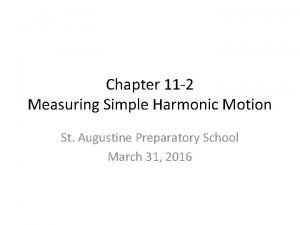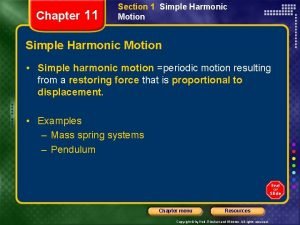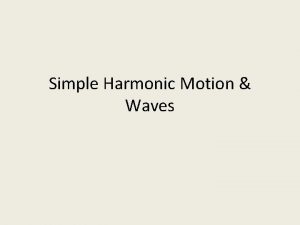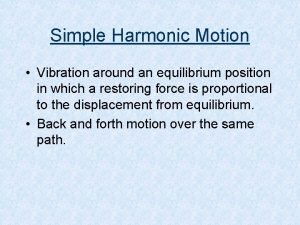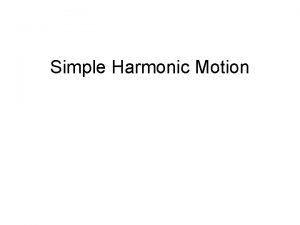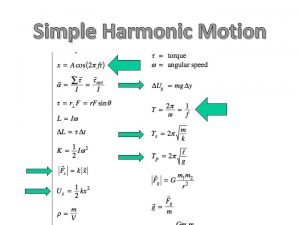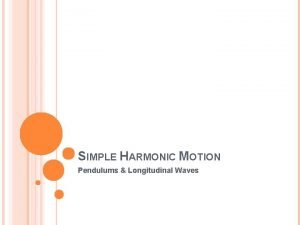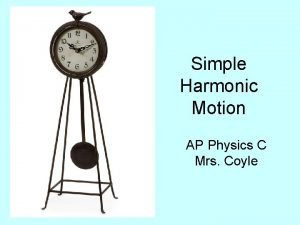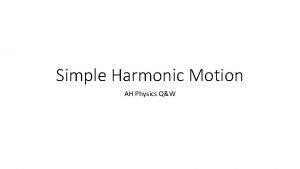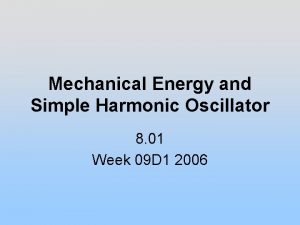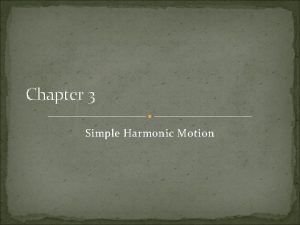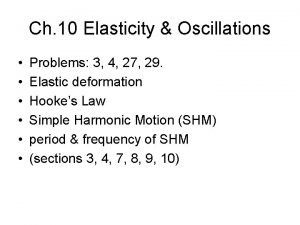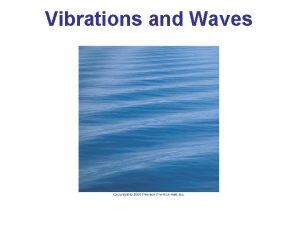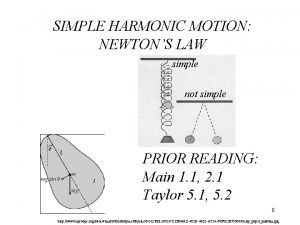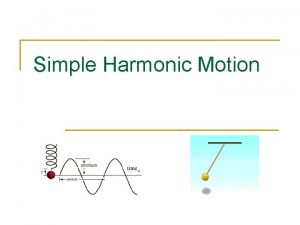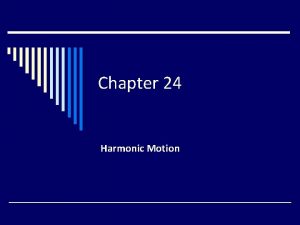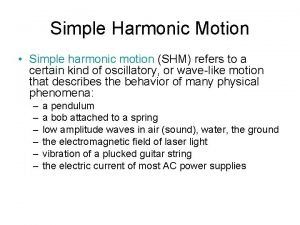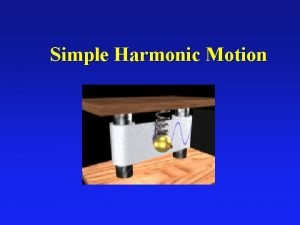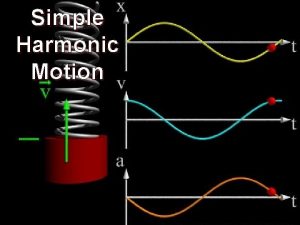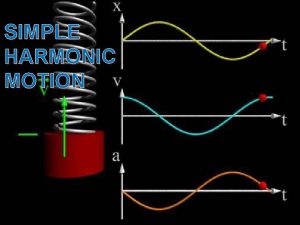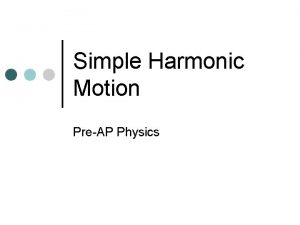Chapter 11 2 Measuring Simple Harmonic Motion St
















- Slides: 16

Chapter 11 -2 Measuring Simple Harmonic Motion St. Augustine Preparatory School March 31, 2016

Definitions • Amplitude: The maximum displacement from equilibrium (meters or radians) • Period: The time that it takes a complete cycle to occur (unit: seconds) • Frequency: The number of cycles or vibrations per unit time (unit: Hertz (s-1) )

The period of a pendulum depends on which factors?

The period of a pendulum depends on which factors? Pendulum Length and Free Fall Acceleration (gravity)

Period of a Simple Pendulum in Simple Harmonic Formula: Motion Period = 2*pi*square root of (length/acceleration of gravity) T: Period (unit: s) 2π: 2*3. 14 (unitless) L = length (unit: m) ag = acceleration of gravity (unit: m/s 2). Use 9. 81 m/s 2 on Earth

Nevis Swing – New Zealand! https: //www. youtube. com/watch? v=Ux 0 t. KX 2 TXOc (start at 2: 20)

Example 1 – Nevis Swing Queenstown, New Zealand is the home of the World’s Largest Swing. Here, you are connected to a 120. m long rope (a soccer field is 110. m long) which makes an arc with a distance of 300 m. The site claims you travel at a speed of 120 km/h on this swing. Does this claim seem reasonable? Why or why not? (This will require us to think about a few different things).

Example 2 You jump off of a platform with a rope around feet and end up in a parabolic path, like a pendulum. If your period for one cycle is 12 s, how high above the ground is the platform you are swinging from?

Solution

Frequency • The formula for frequency is: Frequency is equal to 1 divided by the period f = frequency (unit: Hz) T = period (unit: s)

Period for Mass Spring Systems The period of a mass spring system depends on: 1. Mass 2. Spring Constant Why does mass matter now when it didn’t in the pendulum system?

Increasing the mass of an object increases the inertia (resistance to movement) of that object. In a pendulum, increasing the mass also increases the Fg on the object, so the increase in mass is compensated for. In a spring system it does not add any extra force, so the mass does matter.

Period for Mass Spring Systems in SHM •

Practice Problem • The body of a 1275 kg car is supported on a frame by four springs. Two people riding in the car have a combine mass of 153 kg. When driven over a pothole in the road, the frame vibrates with a period of 0. 840 s. For the first few seconds, the vibration approximates simple harmonic motion. Find the spring constant of a single spring.

Solution

Graded Problems 1) A 125 N object vibrates with a period of 3. 56 s when hanging from a spring. What is the spring constant of the spring? 2) You are designing a pendulum clock to have a period of 1. 0 s. How long should the pendulum be? 3) A trapeze artist swings in simple harmonic motion with a period of 3. 8 s. Calculate the length of the cables supporting the trapeze. 4) Calculate the period and frequency of a 3. 500 m long pendulum at Jakarta, Indonesia, where the acceleration from gravity is 9. 782 m/s 2.
 The body of a 1275 kg car is supported
The body of a 1275 kg car is supported Shm formula list
Shm formula list Simple harmonic motion chapter 11
Simple harmonic motion chapter 11 Wave
Wave Simple harmonic motion vocabulary
Simple harmonic motion vocabulary Simple harmonic motion equilibrium position
Simple harmonic motion equilibrium position Spring constant formula
Spring constant formula Shm reference circle
Shm reference circle What unit is period measured in
What unit is period measured in Harmonic motion equation
Harmonic motion equation Period of simple harmonic motion
Period of simple harmonic motion Frequency of damped oscillation
Frequency of damped oscillation Simple harmonic oscillator
Simple harmonic oscillator Simple harmonic motion
Simple harmonic motion Frequency of shm formula
Frequency of shm formula Simple harmonic motion formula
Simple harmonic motion formula Simple harmonic motion formula
Simple harmonic motion formula
